Over the years, Square has become one of my favorite companies to watch. They started a couple years ago with a Sandwich video, and a free card reader. The reader worked with your mobile phone to allow for you to physically swipe a credit card and take payments for anything. It was revolutionary. I carried my reader with me for years, despite only taking payments a handful of times.
Today, Square announced $Cashtags. Cringe-inducing name aside, this is extremely clever.
As all of us — myself included — try to figure out how to “monetize our brands”, we’re all seeking new and different revenue streams. The most popular approach, for individuals, seems to be Patreon. The usual idea is, you ask for people to commit to giving a small amount of money for each thing you create — blog post, song, video, etc.
I like the idea of Patreon quite a lot, but what if you want something that isn’t recurring, or perhaps, a little more casual?
Enter $Cashtags.
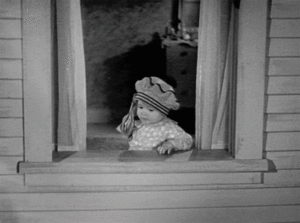
By downloading the Square Cash app, you can claim your own $Cashtag. Once the $Cashtag is set up, you don’t need to touch the app again. By using that $Cashtag, anyone can donate to you, or pay you for goods, or services rendered. All you both need is a debit card. Those paying you don’t need the app; they can do so via the web.
I’ve claimed $liss. Feel free to send me all your money. Daddy needs an Apple Watch, right?
I find $Cashtags so interesting because they remove nearly all barriers from getting paid. As I’ve been fantasizing a lot about ways to parlay podcasting and this website into a job, this fascinates me. Could I make a sustainable business out of $liss? My inclination is “absolutely not”, but who knows? With a little work, anything is possible.
Anyone want to take guesses on how long it will take for me to add a DONATE link to the site header?
I was flipping through August of 2014’s Car and Driver and noticed a couple interesting passages, both about things German.
In a M4 vs. 911 comparison test, regarding the M4:
Throttle progression, steering weight, and shift speed can be set to one of three modes, as in the outgoing car. For the steering, sport-plus is unnaturally stiff, comfort is unnervingly light, and sport mode is just right. It takes us 20 miles to configure the system with our preferred settings, and that’s long enough to grow even fonder of the 911, which ships with the proper calibration as the one and only setting.
The paradox of choice, it seems. I do admire Porsche’s dedication to there being only one truly right answer.
Additionally, regarding driving on the Autobahn:
There’s plenty of traffic, but it’s moving quickly and with the relentless lane discipline we’ll soon grow used to. Unlike in America, where drivers disperse all over the road according to the laws of molecular diffusion, German cars stay to the right whenever they aren’t passing. Germany thus seems to move more volume swiftly on a four-lane road than America can with ten lanes.
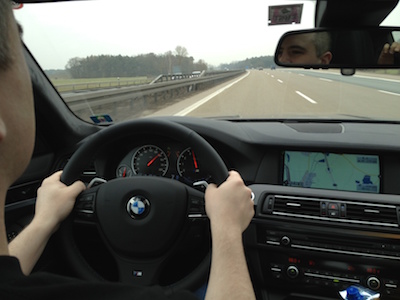
Click/tap to enlarge.
Having been on the Autobahn in 2013, being chauffeured around Germany in a brand-new BMW M5, I got to experience the Autobahn first-hand as a passenger. The thing that struck me the most was not the speed — which was astounding — but was the unwavering dedication to responsible and courteous driving. German drivers have to be seen to be believed; it is clear that driving is treated as a privilege in Germany.
Quite the contrast from America, where driving is also a privilege, but is treated like it is a right.
What a difference a year makes.
The ultrasound below was actually taken a year ago today, even though it didn’t make its public debut until May. The picture was taken this morning, just after Declan woke up. Exactly one year later.
Life is crazy, but also so very beautiful.
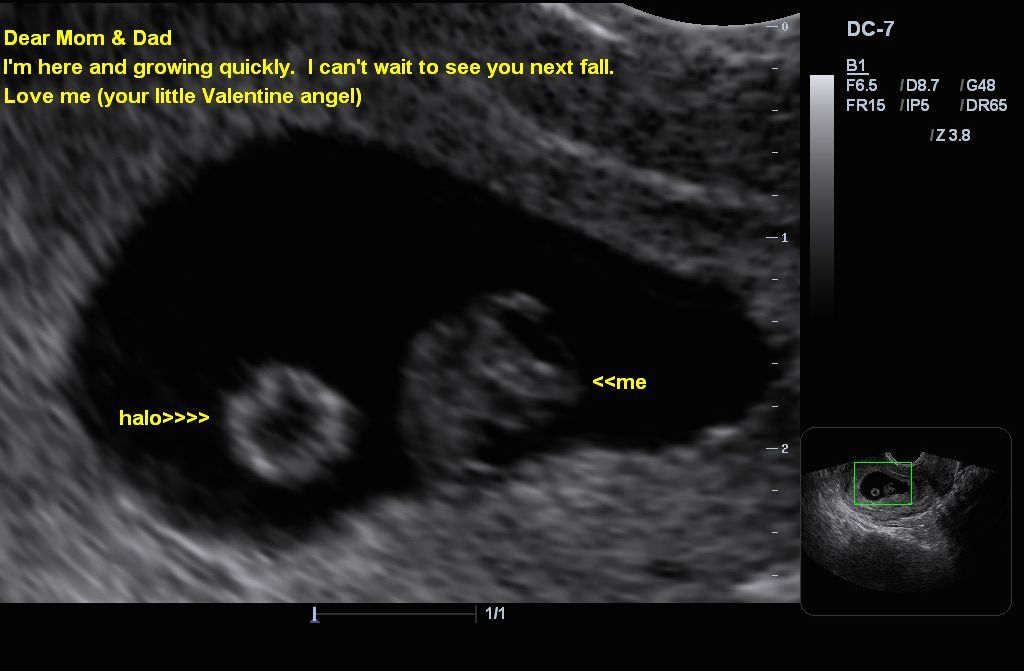
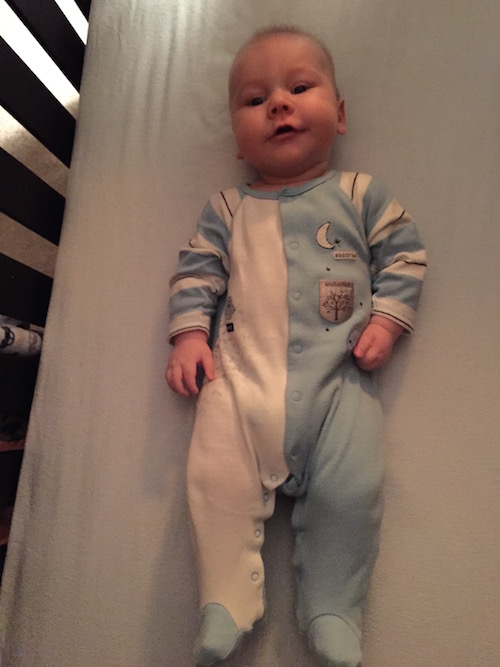

I’ve switched from using Google as my main search engine to using DuckDuckGo. I made the switch when iOS 8 came out.
Yes, sometimes that has problems.
No, the search results aren’t always as good.
Yes, I sometimes fall back to Google.
Yes, I still think it’s worth it.
DuckDuckGo has improved tremendously over the last couple years. I had previously tried it when it was mentioned on Daring Fireball in early 2012. At that time, I felt like the search results left quite a lot to be desired. I gave up on it quickly.
When Apple added it as a “blessed” search provider last year, I tried it again. I haven’t looked back since.
DuckDuckGo promises up front to be “The search engine that doesn’t track you”. This, in and of itself, is reason enough to give it a shot[1]. However, the feature that sold me on DuckDuckGo was its !bang operators.
When searching in DuckDuckGo, you can prefix a search with one of many bang operators. If you do so, DuckDuckGo will then punt your search to that site. For example, if you want to search Amazon for my P311 headphones, you would enter:
!a p311
You can try it out here. Notice that you’re sent to DuckDuckGo, but then immediately punted to Amazon. Pretty convenient.
There are a bunch of bang operators that I use constantly:
!w— Wikipedia!imdb— IMDb!so— Stack Overflow!npm— npm!wa— Wolfram Alpha!yt— YouTube!m— Google Maps!gf— Google Finance
The list goes on and on. But perhaps most importantly, if I ever need to fall back to Google:
!g— Google!i— Google Images
If I’m doing a search in DuckDuckGo and I’m not satisfied with the results, I just prefix
!g to the search query, and I get the Google results I’m used to.
As an added benefit, DuckDuckGo does as much as possible to prevent your data from leaking
to advertisers via Google. Instead of sending you to www.google.com, you’re sent to
encrypted.google.com. This has several benefits, most notably, preventing
advertisers (and destination sites) from seeing what you’ve searched for.
That being said, I don’t have to fall back to Google that terribly often. You’d be surprised how great DuckDuckGo’s results are these days.
DuckDuckGo also supports my most frequently used query modifier: site:. This allows
me to limit a search to just one site, such as this one. There are plenty of other
modifiers to use, too.
DuckDuckGo may or may not be for you, but I really like it, and I’m using it on all my devices. In the rare moments I’m using Chrome, or if I’m on someone else’s computer, I feel completely crippled now. Without my !bang operators, I’m completely useless.
Yes, I use Google Apps for my domain for e-mail. Yes, I see the hypocrisy here. No, I don’t care. ↩

Wired has an excellent write-up about the process and thinking behind creating Disney’s Magic Band. Eschewing credit-card style admission passes and room keys, MagicBands are bracelets that double as RFID tags. They’re used to open your hotel room, enter the park, buy food, get Fast Passes, and more.
It’s amazing what Disney can do when they know precisely where you are in the park. Using the example of a family walking up to a restaurant, where they had pre-ordered their meals:
Their MagicBands […] feature a long-range radio that can transmit more than 40 feet in every direction. The hostess, on her modified iPhone, received a signal when the family was just a few paces away. Tanner family inbound! The kitchen also queued up: Two French onion soups, two roast beef sandwiches! When they sat down, a radio receiver in the table picked up the signals from their MagicBands and triangulated their location using another receiver in the ceiling. The server […] knew what they ordered before they even approached the restaurant and knew where they were sitting.
Furthermore, this makes a tremendous difference in your Disney experience:
The redesigned Disney World experience constrains choices by dispersing them, beginning long before the trip is under way. “There are missions in a vacation,” [Disney COO] Tom Staggs says. In other words, Disney knows that parents arrive to its parks thinking: We have to have tea with Cinderella, and where the hell is that Buzz Lightyear thing, anyway? In that way, the park isn’t a playground so much as a videogame, with bosses to be conquered at every level.
Erin and I got to experience the MagicBands when we went in August of 2013. At that time, it was just a trial, but you could already tell it was going to change the way you interacted with Disney World. They really did remove friction — the only thing we needed during the day was the band. No wallet. No keys. No cash. No Fast Passes. No worries.
Sarah Kogod writes about what you shouldn’t say to someone who is suffering through infertility, as Erin and I did. She also mentions what you should say:
What can I do?
The fertility process can make everyone feel helpless — from the couple going through it to the friends who don’t know what to say. This one question empowers both of you. It allows the couple to tell you what they need, and lets them know it’s okay if those needs change as things get harder. And it lets you feel like you’ve said the right thing, when everything else sounds wrong.
(Link via Rick Gore)
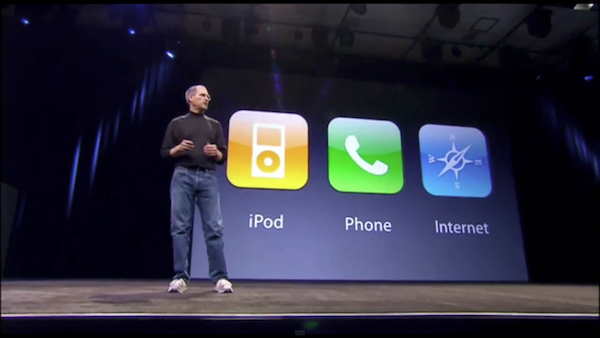
On Monday, Apple had their Apple Watch Special Event. While we had seen some information about the Apple Watch last fall, many questions were left unanswered. Most frequently discussed: cost.
There was a lot of discussion about the cost of these new gadgets, most predominantly with regard to the Apple Watch Edition. Everyone could feel, in their gut, that it would be expensive. But no one really knew how expensive it would be.
Monday, those questions were answered. Unsurprisingly, the internet is upset.
There’s been a lot of chatter regarding the Apple Watch Edition in particular. Many are begrudging Apple’s supposed choice to focus on fashion rather than functionality. A typical example:
@caseyliss sure, but who do you respect
more, a well-known fashion designer, or someone who designs great, useful tools?
— Nadagast (@Nadagast)
March 12, 2015
Other lamentation is about the price tag. Michael Saji writes in his piece that is passive-aggressively titled Vulgar:
Apple has taken a turn, as MG Siegler says, towards luxury. But I would rather see Apple charge a fair price and make a fair profit.
Later in his piece, he continues:
Luxury is the outgrowth of our desire for fantasy and our discontent with our present, and feeding our materialism will not bring us the contentment we crave, nor will it make the world a better place. I realize now I once thought Apple could do better.
When one says “Apple could do better”, I hear “Apple is doing something that’s not for me, and that makes me uncomfortable.”
Focus
No one outside Apple knows how many balls Apple has in the air. Certainly adding a new product category like the Watch will spread that focus more thinly than it has been in the past. Focus has to be spread more thinly when existing staff, like Jony Ive’s design team, is doing the work on something new.
However, none of us know how much bandwidth Apple really has. It seems to me that everyone complaining about Apple’s focus being shifted is doing so on the assumption that Apple was already running out of focus. While that absolutely could be true, it is not necessarily true.
Curiously, no one seems to be complaining about the “regular” Watches — the ones that are clearly made for them. Only the Edition seems to be the target of so much ire. Apple’s foray into fashion, specifically with the Edition, seems to have left many fans upset.
So many people seem to think that because Apple has started to care about fashion, it’s an indisputable inevitability that one day they will only care about fashion.
This was discussed really well on this week’s episode of Topical (Overcast link). Russell spent a moment lamenting:
It could just be a sign of a slow, steady progression to a company that makes products … that I no longer care about.
It’s certainly possible. Jelly succinctly makes my point for me immediately after:
The other possibility here is that it’s not necessarily going to take away from the current direction of Apple but kind of feed back into it.
I wonder if Apple learning more about fashion will positively influence anything that is carried or worn. Discoveries made in the process of making the Apple Watch, and gleaned from Beats employees’ expertise, could lead to great changes in iPhones.
Stagnation

An Apple that stands still will rot. Trying new things is necessary for their survival.
BlackBerry, née Research in Motion, is the canonical example of what happens if Apple stands still and sticks its head in the sand. BlackBerry mobile phones were the mobile phone to get. Business loved them, and thanks to BlackBerry Messenger, lots of kids did too. I’ve heard many times that BlackBerry phones were HUGELY popular amongst teenagers, particularly in Europe.
BlackBerry had dominated the market. There was, it seemed, little to worry about. They just had to sit back and collect money. Things were going really well for them… until 2007, when the iPhone was released:
Apple does not want to follow in BlackBerry’s footsteps. That’s why they are branching out into other industries. Including not only fashion but also, possibly, automobiles.
This is good and healthy.
Apple would much rather be IBM — which started as a company that built scales — than BlackBerry or even Microsoft. BlackBerry is assumed to be circling the drain, and Microsoft is undergoing massive changes in order to avoid the same fate.
Same as it Ever Was
Apple has always specialized in luxury. The difference between Apple of the past and the Apple that produces the Watch Edition is that this luxury is quite a bit less affordable to the average consumer than it once was.
Coming from a position as purveyors of affordable luxury, there are only two places to go.
Apple could either move downmarket, and go toe-to-toe with Samsung and LG. Or, they could
move upmarket, and start making more expensive aspirational products. I
reckon most Apple fans would prefer the latter. I know I do.
Furthermore, this isn’t the first time that Apple was fashionable. How quickly we all forget these images:

Apple was hugely fashionable then. Just because Apple is now making a product that is unabashedly about fashion doesn’t mean they didn’t consider fashion before.
In discussing this post with my friend Myke, he pointed out to me there are many examples of this in Apple’s history:
- Colored plastic
- White plastic
- Aluminum
- Glass
These were all major trends that Apple heralded. Today, it’s the same as it ever was.
It Will be Okay
No one outside of Cupertino can really know where Apple is headed. I am, like everyone else, just prognosticating. What I fear is that too many people are making judgements about the Apple of tomorrow based on their understanding of the Apple of today.
Ben Thompson sums this up well:
Thus, in order to estimate just how important the Apple Watch might be, it’s essential to step back from the world as it is and consider the world as it might be, and, having done that, consider just how significant a role Apple’s offering might play.
As with all things, only time will tell. My money is on a brighter and shinier Apple than we’ve ever seen before.
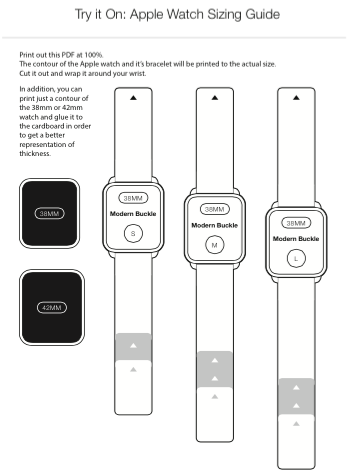
The folks over at Exact Fitness have created a super-useful set of cut-outs that you can print to try on your own faux-Apple Watch.
I have small wrists — I just measured not-particularly-scientifically at 165mm — and I was extremely skeptical they’ll support a 42mm Watch. My every day watch, a Timex Weekender, is 38mm.
Thanks to these nifty cutouts, I was able to see that the 42mm is probably better, and if not, is at least in the running.
Either way, who doesn’t like a little bit of arts & crafts?
(Link via Rob Rhyne)
On this week’s Bonanza!, Matt Alexander made a really clever observation (emphasis mine) regarding the Apple Watch:
I remember when we first sold a $500 watch at Need, and the reactions from the world were “What on Earth are you doing!?”
[…]
It’s really impressive to see how easily and how competently [Apple] can convince people to buy something they would have never thought to buy before.
To which Myke Hurley replied:
That’s their magic.
Indeed.
I grew up with music constantly playing in the house. My parents, born in the mid-to-late 1950’s, brought me up on all kinds of music. Their tastes strongly aligned with many of the acts that played Woodstock 1969. Family legend says that my dad had a ticket to the festival — he lived outside New York City at the time — but chose not to go.
Regardless, someone has come up with a (supposed) list of what each act was paid to perform that year. I find it absolutely fascinating. I’ve recreated the chart I found on Ultimate Guitar below, with computed 2015 dollars thanks to Wolfram Alpha.
| # | Artist | 1969 Dollars | 2015 Dollars |
|---|---|---|---|
| 1 | Jimi Hendrix | $18,000 | $118,100 |
| 2 | Blood, Sweat and Tears | $15,000 | $98,430 |
| 3 | Joan Baez | $10,000 | $65,620 |
| 3 | Creedence Clearwater Revival | $10,000 | $65,620 |
| 5 | The Band | $7,500 | $49,210 |
| 5 | Janis Joplin | $7,500 | $49,210 |
| 5 | Jefferson Airplane | $7,500 | $49,210 |
| 8 | Sly and the Family Stone | $7,000 | $45,930 |
| 9 | Canned Heat | $6,500 | $42,650 |
| 10 | The Who | $6,250 | $41,010 |
| 11 | Richie Havens | $6,000 | $39,370 |
| 12 | Arlo Guthrie | $5,000 | $32,810 |
| 12 | Crosby, Stills, Nash & Young | $5,000 | $32,810 |
| 14 | Ravi Shankar | $4,500 | $29,530 |
| 15 | Johnny Winter | $3,750 | $24,610 |
| 16 | Ten Years After | $3,250 | $21,330 |
| 17 | Country Joe and the Fish | $2,500 | $16,400 |
| 17 | The Grateful Dead | $2,500 | $16,400 |
| 19 | The Incredible String Band | $2,250 | $14,760 |
| 20 | Mountain | $2,000 | $13,120 |
| 20 | Tim Hardin | $2,000 | $13,120 |
| 22 | Joe Cocker | $1,375 | $9,022 |
| 23 | Sweetwater | $1,250 | $8,202 |
| 24 | John B. Sebastian | $1,000 | $6,561 |
| 25 | Melanie | $750 | $4,921 |
| 25 | Santana | $750 | $4,921 |
| 27 | Sha Na Na | $700 | $4,593 |
| 28 | Keef Hartley | $500 | $3,280 |
| 29 | Quill | $375 | $2,460 |
It’s not clear to me where nor how these numbers were discovered, but they’re a fun thing to think about either way.
What stuns me the most, other than the ordering, is how little money each of these artists made. With some much-derided bands absolutely cleaning up on tours, to see such legendary artists make so little money is shocking. Granted, this was one show and not a whole tour; nevertheless, much has changed in the last 45 years.
Speaking of how things have changed, we’ve covered Woodstock 1999 before. As much as I love the artists that I grew up with, I can’t argue that Woodstock 1969 was something special.
(Via Ultimate Guitar via Dangerous Minds via Danny Mason)
